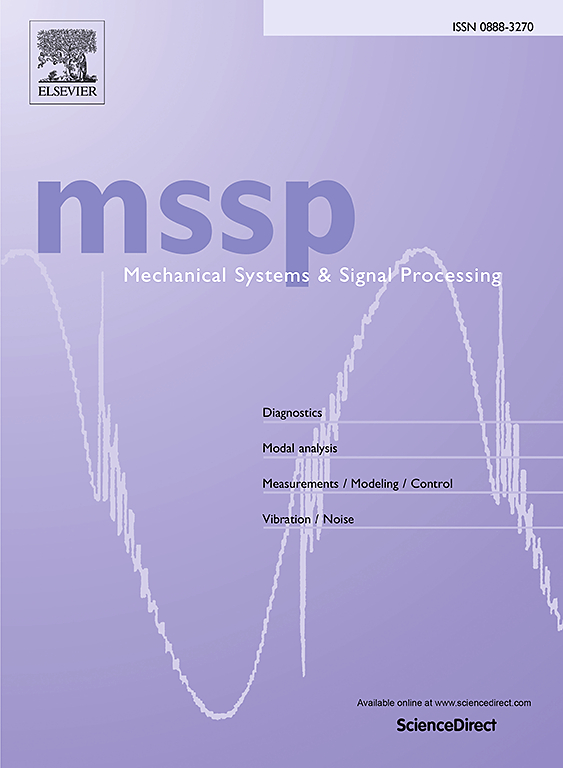Vibration and power flow analysis of a uniform beam coupled with an ABH beam with arbitrary angles
IF 7.9
1区 工程技术
Q1 ENGINEERING, MECHANICAL
引用次数: 0
Abstract
This study establishes a model of a uniform beam coupled with an Acoustic Black Hole (ABH) beam, considering arbitrary connection angles. Translational and rotational springs are used to simulate the connection stiffnesses as well as the elastic boundary conditions. Under the general Rayleigh-Ritz framework, a modified Fourier series is chosen as the admissible function for the flexural and longitudinal displacements of the ABH coupled beam. The modified Fourier series ensures the continuity of higher-order spatial derivatives across the entire solution domain, enabling the calculation of structural intensity and power flow within the ABH coupled beam. Accurate predictions of the modal characteristics and dynamic response of the system are verified through comparisons with results simulated from FEM or experimental data. Subsequently, numerical examples are presented to study the ABH effect and vibration energy transmission in the coupled system. The excellent energy focalization characteristic is observed, and the unfavorable ABH failure phenomenon is also confirmed. Two mechanisms of ABH failure are revealed through power flow analysis: energy localization and coupling node hindering effects. Finally, the effect of coupling angle variation on vibrational energy transmission in the system is investigated. The established theoretical model and the phenomenon presented in this work provide guidance for applying ABH in coupled beam structures and promote its use in complex systems.
均匀梁与任意角度ABH梁耦合的振动与功率流分析
本文建立了考虑任意连接角的均匀光束与声黑洞(ABH)光束耦合的模型。用平移弹簧和旋转弹簧模拟连接刚度和弹性边界条件。在一般Rayleigh-Ritz框架下,采用改进的傅立叶级数作为ABH耦合梁的弯曲位移和纵向位移的容许函数。改进的傅里叶级数确保了高阶空间导数在整个解域中的连续性,从而可以计算ABH耦合梁内的结构强度和功率流。通过与有限元模拟结果或实验数据的比较,验证了系统模态特性和动态响应的准确预测。通过数值算例研究了耦合系统中的ABH效应和振动能量传递。观察到良好的能量聚焦特性,也证实了不利的ABH失效现象。通过潮流分析,揭示了ABH失效的两种机制:能量局部化和耦合节点阻碍效应。最后,研究了耦合角变化对系统振动能量传递的影响。本文所建立的理论模型和现象为ABH在耦合梁结构中的应用和推广其在复杂系统中的应用提供了指导。
本文章由计算机程序翻译,如有差异,请以英文原文为准。
求助全文
约1分钟内获得全文
求助全文
来源期刊

Mechanical Systems and Signal Processing
工程技术-工程:机械
CiteScore
14.80
自引率
13.10%
发文量
1183
审稿时长
5.4 months
期刊介绍:
Journal Name: Mechanical Systems and Signal Processing (MSSP)
Interdisciplinary Focus:
Mechanical, Aerospace, and Civil Engineering
Purpose:Reporting scientific advancements of the highest quality
Arising from new techniques in sensing, instrumentation, signal processing, modelling, and control of dynamic systems
 求助内容:
求助内容: 应助结果提醒方式:
应助结果提醒方式:


